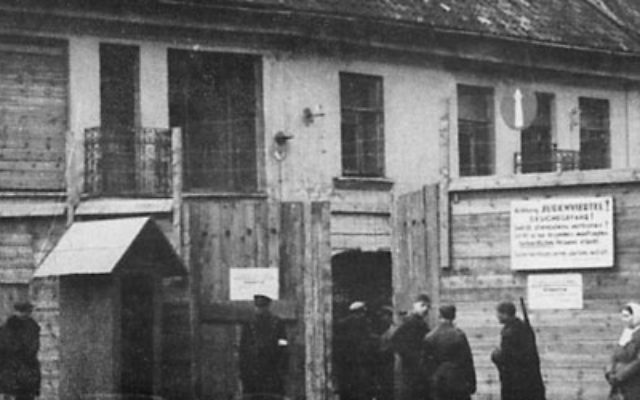Keeping the memory alive
AN eyewitness account of the destruction of Vilna Jewry during World War II was published by Mendel Balberyszski in 1967. Born in Vilna, Lithuania, he was one of a few thousand Vilna Jews to survive out of a population of more than 70,000 in 1941.
Amazingly, Balberyszski’s wife Leah and two children Deborah and Theodore also survived, although the males and females spent the later years of World War II in different camps.
While in the ghetto, Balberyszski made meticulous notes and kept them in a little suitcase that his mother held on to. Unfortunately, the suitcase disappeared when she was separated from the rest of the family.
After liberation in 1945, while awaiting news about missing members of his family, Balberyszski returned to Vilna to continue his research into the destruction of the ghetto by spending months looking at official documents at the Vilna State Museum.
His work stopped when news came through that his wife and daughter had survived and were in a displaced person’s camp.
The reunited family spent time in Europe before migrating to Australia in 1949.
Balberyszski continued writing his book during the 1950s, but with establishing a new life in Melbourne and running the Balberyszski Jewish Bookstore, it would not be until 1967 that his book on the Vilna ghetto, Stronger Than Iron, would be published in Israel.
Written in Yiddish and being more than 600 pages long, the book was regarded as one of the most important research works and eyewitness accounts.
Sadly, Balberyszski did not get to see the published book as he died the previous year in Melbourne.
And this was one reason why his children, Deborah Zuben and Dr Theodore Balberyszski, wanted to have Stronger Than Iron translated into English and republished.
Mrs Zuben says the book was a fitting memorial to her parents who did so much to ensure that their family tradition would continue.
“Whenever I visited Theo in Israel I would nag him about doing the book,” says Mrs Zuben, speaking from her home in Caulfield South.
However, Dr Balberyszski, who made aliyah in 1958, was always busy with his work in the mining industry and with postgraduate studies at university. He also served as a professor at the Colorado School of Mines in the United States. In 1986, he returned to Israel to work as a consultant to government and private companies.
Dr Balberyszski says that since 1967 many books about the Holocaust have been published, but Stronger Than Iron was the only comprehensive eyewitness account about the Vilna ghetto.
“For quite some time now, I have been urged by Holocaust historians to translate the book into English,” says Dr Balberyszski.
“An English edition would be of great value to the new generation of Holocaust historians and descendants who do not read Yiddish. And in the era of Holocaust deniers, it would provide another
eyewitness document of the systematic destruction of the Jewish people.
“But it was only three years ago that I was able to devote time to the project, which has taken three years.”
Dr Balberyszski, who was only eight when World War II broke out in 1939, says he was not prepared for the intense emotional experience that he would have to go through during the translation of the book, adding that his wife Anat noticed changes in his behaviour during this period.
Well-known Melbourne Yiddish translator Abraham Cykiert (who died in March 2009) was commissioned to work on the book with Dr Balberyszski, and it has just been published by Israeli publisher, Gefen Publishing House.
“It was an accurate account about what happened in the Vilna ghetto,” says Mrs Zuben.
“Even though my father lost all the notes he had written in the ghetto, he had a very good memory and all the details were kept in his head.
“I remember when we lived in Carlton in a small flat behind the bookshop that he would sit at the table and write, while we would sit around and listen to him.
“My father loved Vilna so much. He loved the city and the people and was involved in Jewish public life. He called it the Jerusalem of Lithuania.”
In Australia, Balberyszski was also active in public life, founding the Association of Partisans and Camp Survivors and serving as president.
In the preface to the first edition, Balberyszski wrote that he chose the title Stronger Than Iron because a human had to be stronger than iron to endure the savage brutality and hatred of the Germans who wanted to exterminate Vilna Jewry.
DANNY GOCS
Stronger Than Iron – The Destruction of Vilna Jewry 1941-1945: An Eyewitness Account by Mendel Balberyszski is published by Gefen Publishing House. It is available from bookshops and www.amazon.com.
PHOTO: Entrance to the Vilna ghetto.


comments